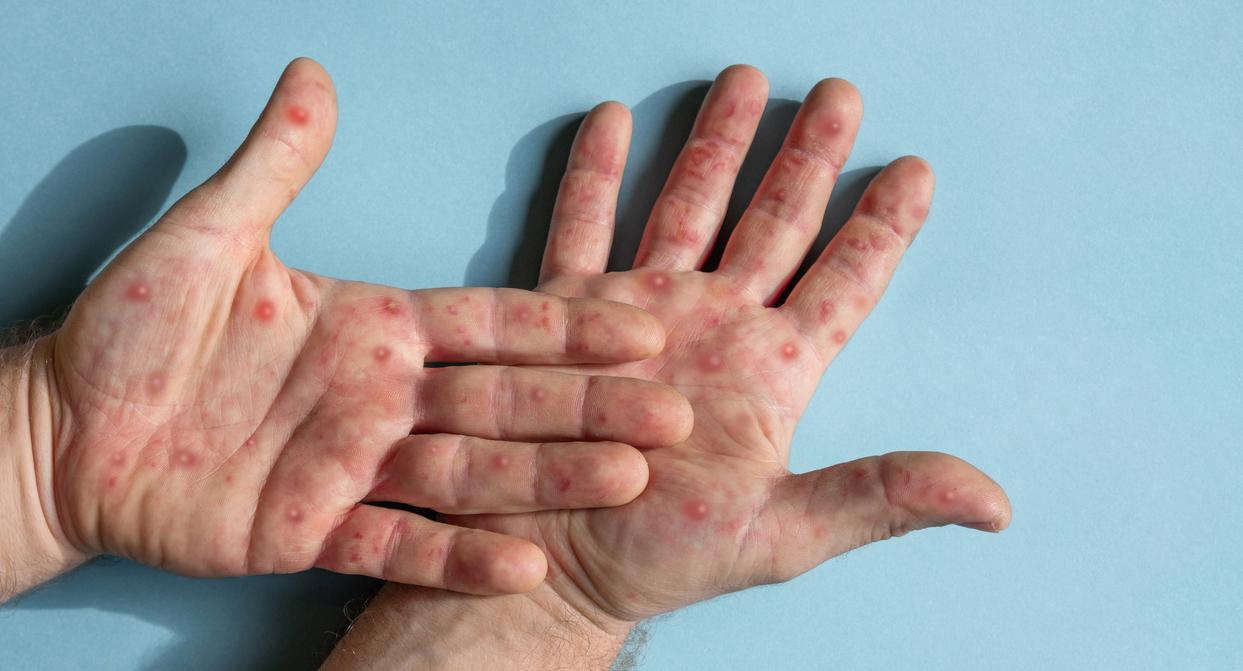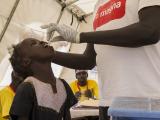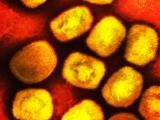A new study in Emerging Infectious Diseases describes two attempts by researchers to assess how many missed mpox cases were in San Francisco and the United States in general during the 2022 outbreak, while another study in The Journal of Infectious Diseases finds low household transmission of the virus among children.
Because mpox is not endemic in the United States and the rash for the virus commonly appears on genitals, the researchers for the first paper hypothesized that clinicians may have misdiagnosed mpox as another sexually transmitted infection, such as herpes simplex virus infection or syphilis, or other conditions, including hand-foot-and-mouth disease, varicella zoster virus infection, and even spider bites.
Under 10% MSM seropositive for orthopoxvirus
The first study conducted to assess the prevalence of misdiagnosed mpox was a prospective serologic survey among men who have sex with men (MSM) in San Francisco, California. The study took place at four health clinics in San Francisco that regularly treat MSM for sexually transmitted infections (STIs).
Participants were self-selected from June to August 2022 and provided blood samples for mpox antibody detection.
Serum samples from the final sample size of 225 participants. The median age was 34, and 87.1% reported sexual orientation as gay. Of the 225 participants, 18 (8.0%) were positive for orthopoxvirus immunoglobulin G (IgG), and 3 (1.3%) were positive for orthopoxvirus IgM. Those 3 participants were 20 to 49 years of age, and all reported travel in the previous 2 months.
"1 reported attending a large event, and 1 reported having had contact with someone with mpox," the authors wrote. "All 3 participants reported having had 3–20 sex partners within the previous month. Two participants reported signs/symptoms consistent with mpox in the previous 3 months, including rash, diaphoresis, and lymphadenopathy."
Lesion swabs show small undiagnosed group
In the retrospective molecular testing study of skin rashes, mpox testing was performed on lesion swab samples from 1,196 patients across the United States. A total of 67 (5.6%) specimens tested positive for mpox DNA. the most common collection sites for specimens were arms, the anogenital region, and legs.
Mpox was probably undiagnosed in a small subset of symptomatic patients during the height of the mpox outbreak in the United States.
"Mpox was probably undiagnosed in a small subset of symptomatic patients during the height of the mpox outbreak in the United States," the authors said. "The highest percentage positivity was among those who reported sexual behavior that places someone at increased for STI/HIV."
In total, the United States has seen approximately 30,000 mpox cases as of March of 2023, with 21,798 mpox cases reported during the peak of the outbreak, June to September 2022.
Household attack rates very low
Though most US mpox cases have been among MSM, some cases among children, most often household contacts of cases, have been reported, but the secondary attack rate for children living with infected adults is not known.
In The Journal of Infectious Diseases study, researchers used a database of California kids ages 16 and younger who were household contacts of confirmed cases to calculate attack rate. A total of 129 pediatric contacts were identified through August 31, 2022.
Eighteen of the children developed symptoms, 12 (66.7%) underwent mpox testing; 5 of those (41.2%) were confirmed cases, 6 (50.0%) were negative, and 1 (0.8%) had an indeterminate result. Six symptomatic children were not tested for mpox (33.3%), the authors said.
Six infected contacts were identified, which means a secondary attack rate of 4.7% (6 of 129). Te median age of infected children was 4.5 years, and 4 of the 6 kids were Hispanic/Latino.
"Although most children exposed within the household were contacts to adult mpox cases, one of the confirmed cases in this series was exposed by an older sibling in the household," the authors concluded. "Three of six children who acquired mpox through household contact resided in the same household, suggesting factors specific to the index cases might have impacted transmission."





















